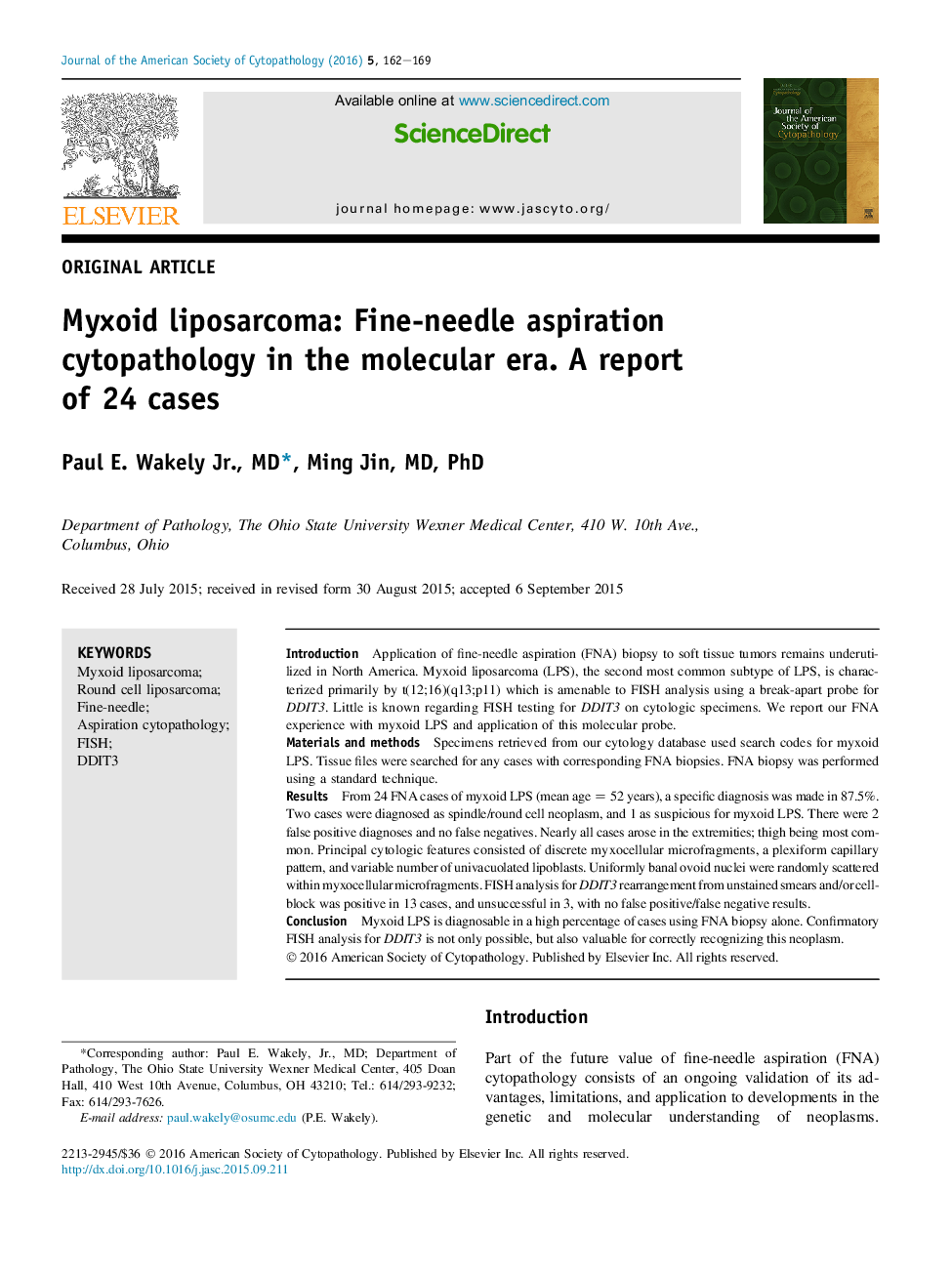| Article ID | Journal | Published Year | Pages | File Type |
|---|---|---|---|---|
| 2776221 | Journal of the American Society of Cytopathology | 2016 | 8 Pages |
IntroductionApplication of fine-needle aspiration (FNA) biopsy to soft tissue tumors remains underutilized in North America. Myxoid liposarcoma (LPS), the second most common subtype of LPS, is characterized primarily by t(12;16)(q13;p11) which is amenable to FISH analysis using a break-apart probe for DDIT3. Little is known regarding FISH testing for DDIT3 on cytologic specimens. We report our FNA experience with myxoid LPS and application of this molecular probe.Materials and methodsSpecimens retrieved from our cytology database used search codes for myxoid LPS. Tissue files were searched for any cases with corresponding FNA biopsies. FNA biopsy was performed using a standard technique.ResultsFrom 24 FNA cases of myxoid LPS (mean age = 52 years), a specific diagnosis was made in 87.5%. Two cases were diagnosed as spindle/round cell neoplasm, and 1 as suspicious for myxoid LPS. There were 2 false positive diagnoses and no false negatives. Nearly all cases arose in the extremities; thigh being most common. Principal cytologic features consisted of discrete myxocellular microfragments, a plexiform capillary pattern, and variable number of univacuolated lipoblasts. Uniformly banal ovoid nuclei were randomly scattered within myxocellular microfragments. FISH analysis for DDIT3 rearrangement from unstained smears and/or cell-block was positive in 13 cases, and unsuccessful in 3, with no false positive/false negative results.ConclusionMyxoid LPS is diagnosable in a high percentage of cases using FNA biopsy alone. Confirmatory FISH analysis for DDIT3 is not only possible, but also valuable for correctly recognizing this neoplasm.
